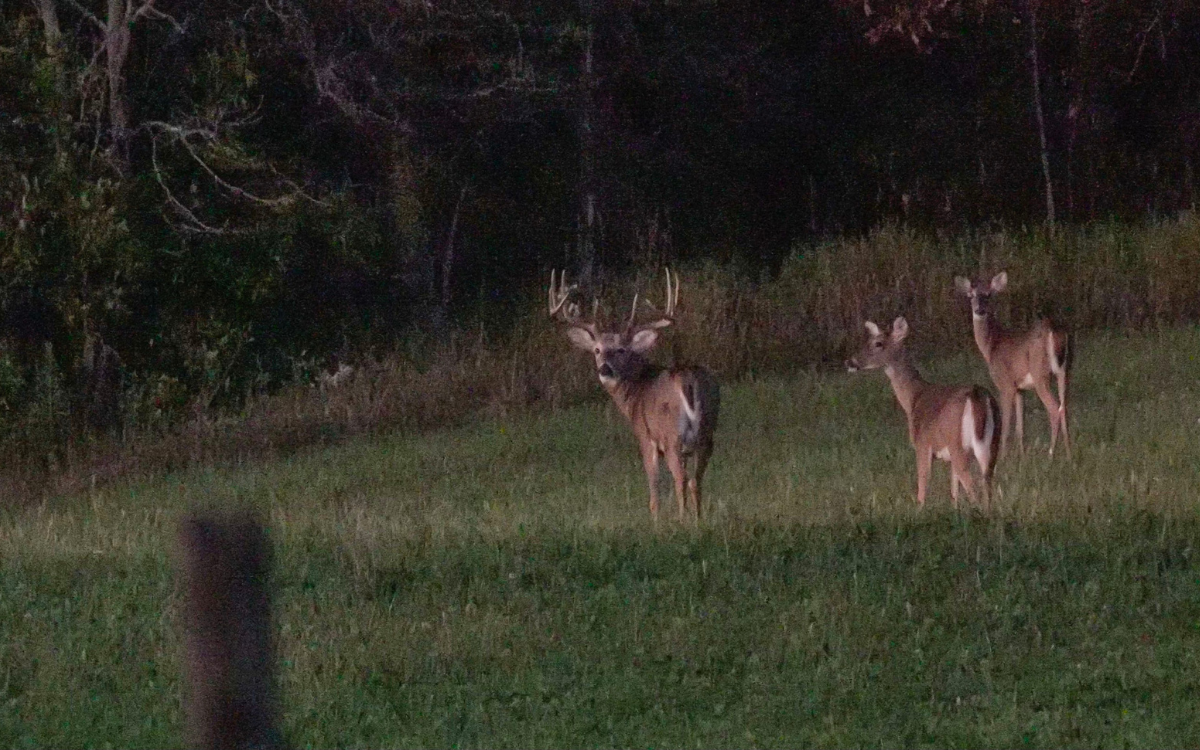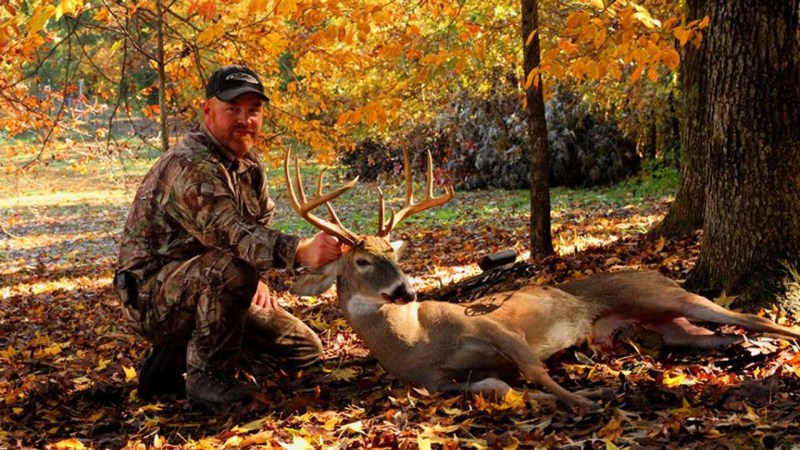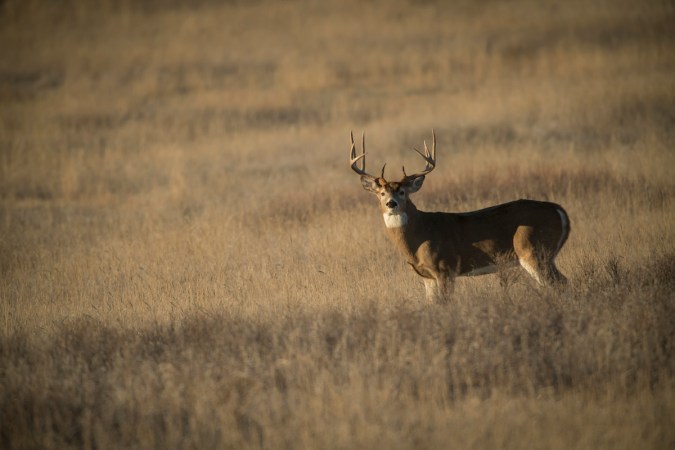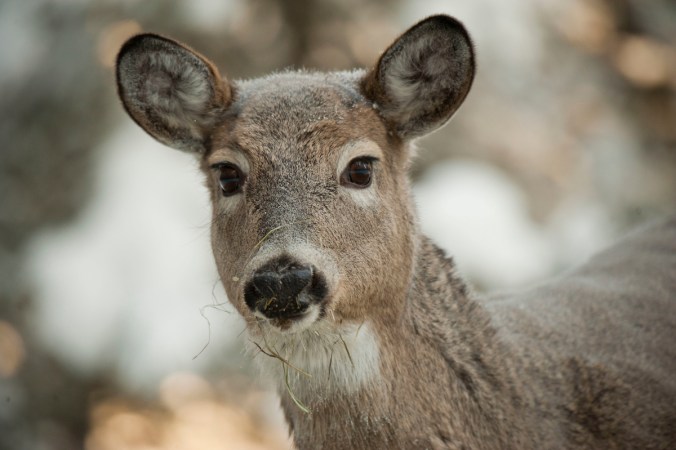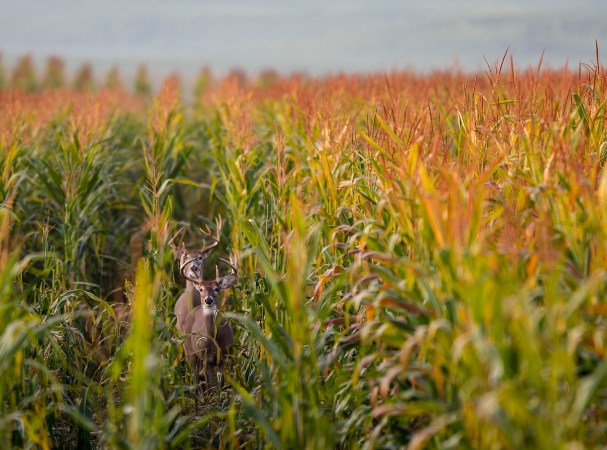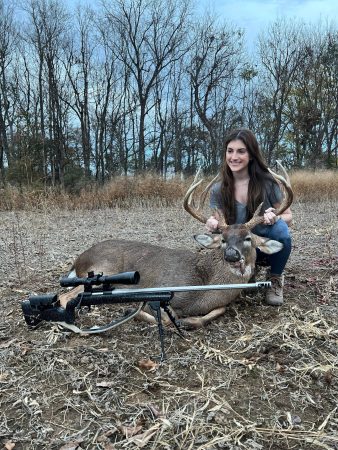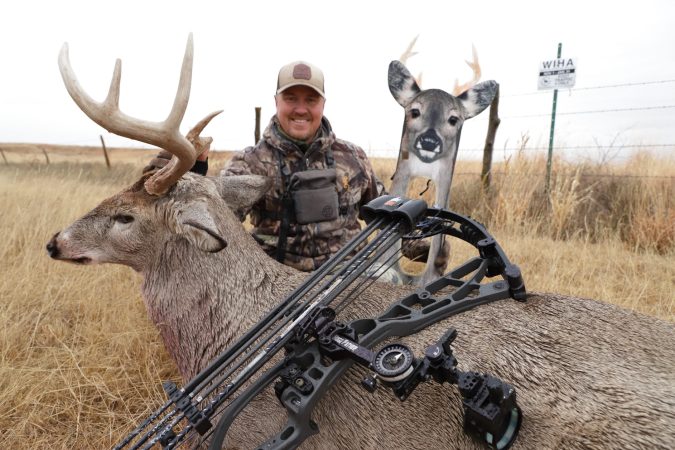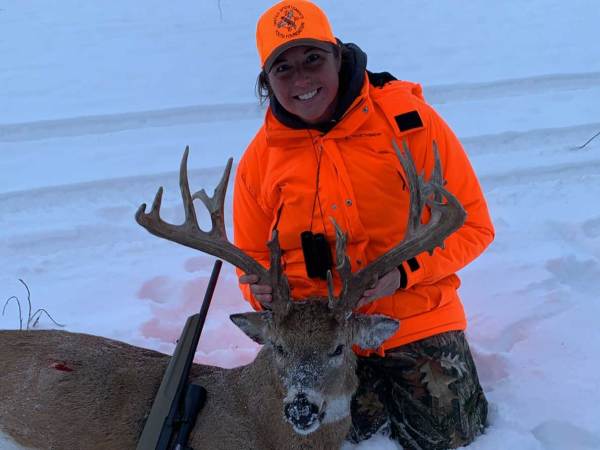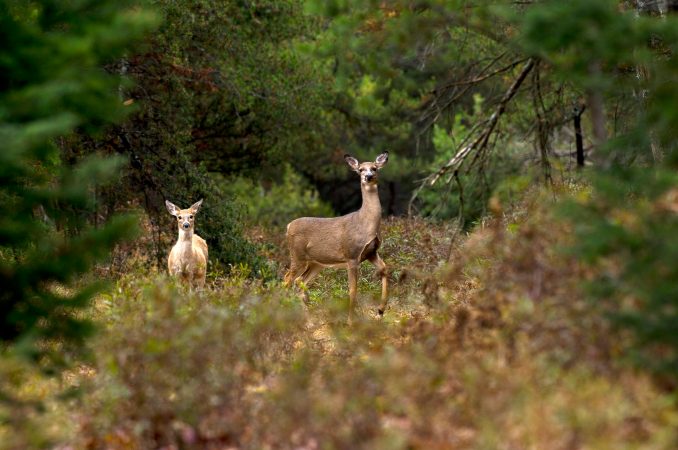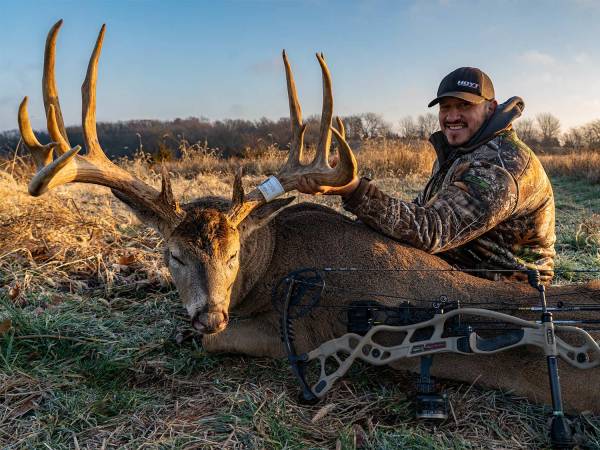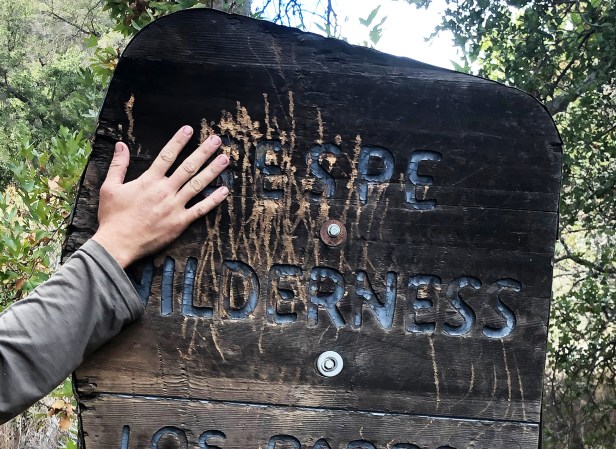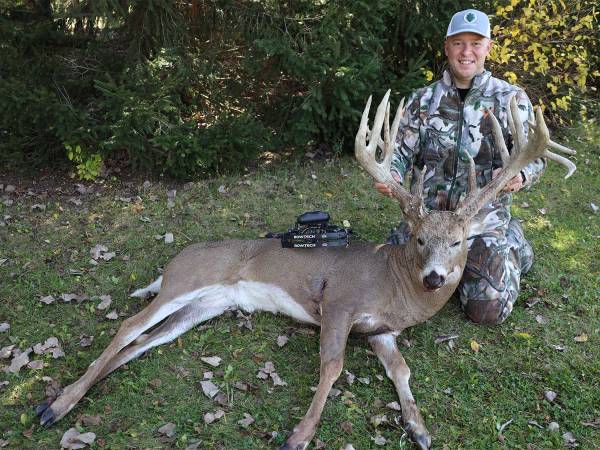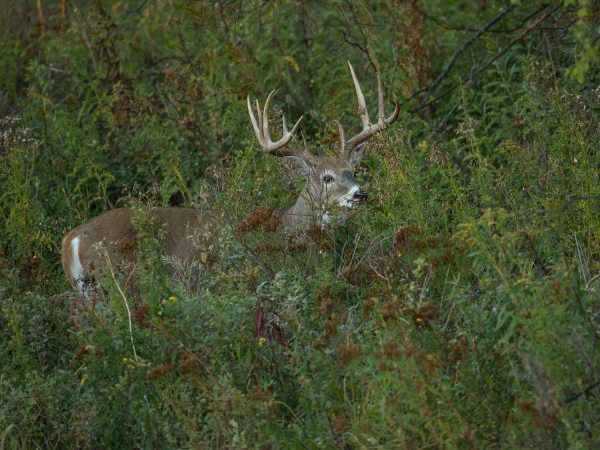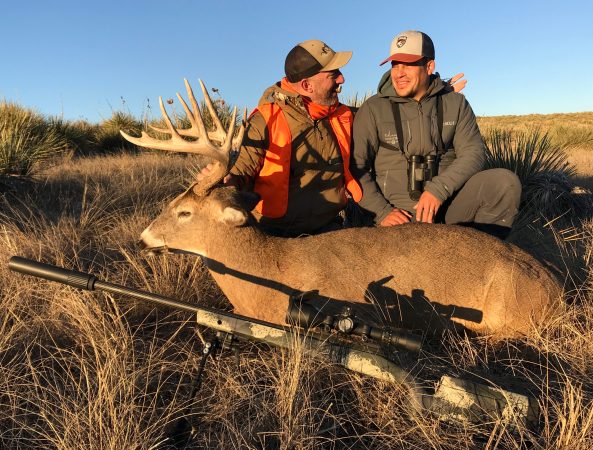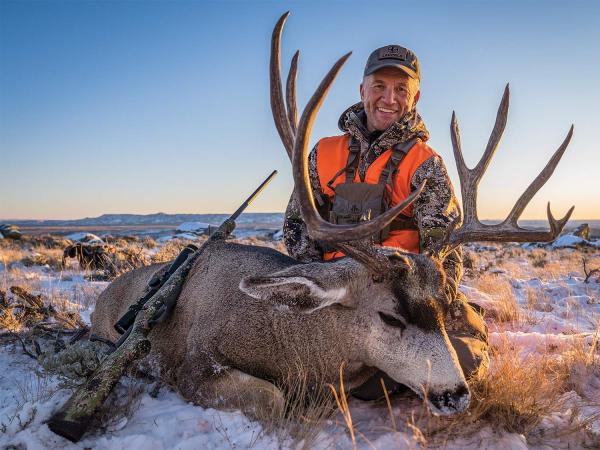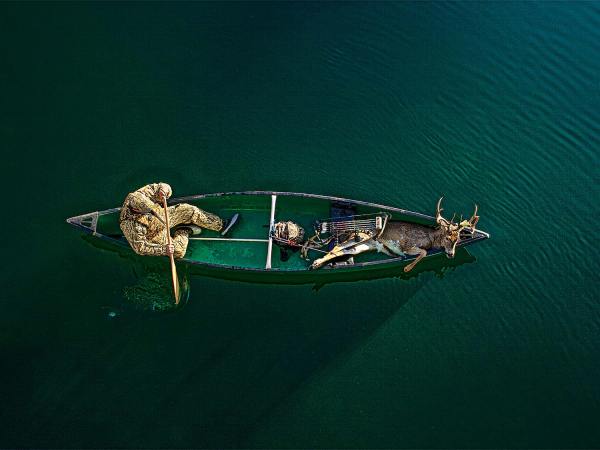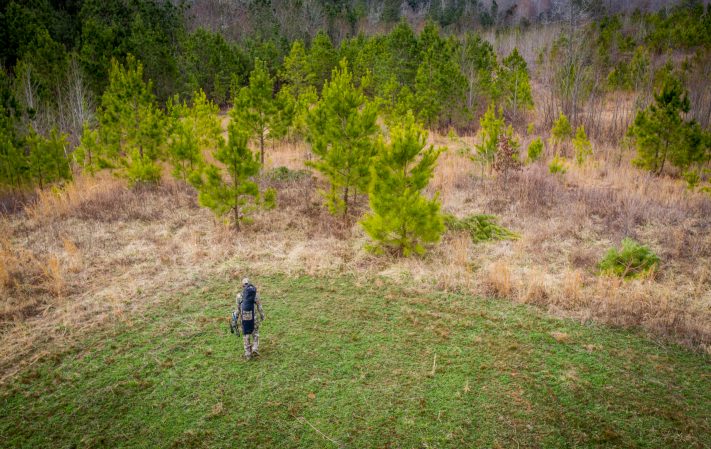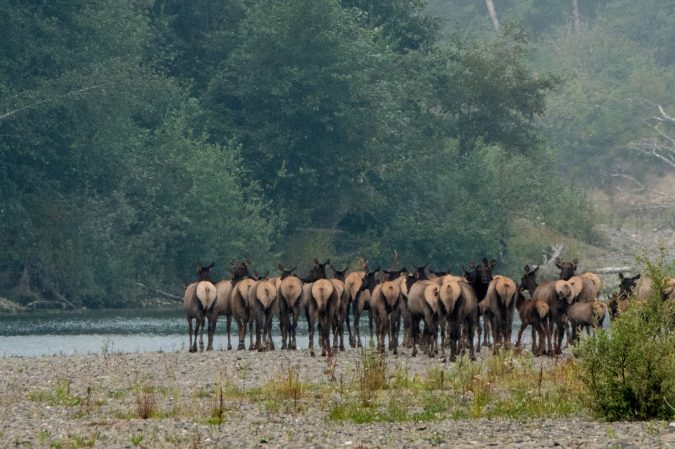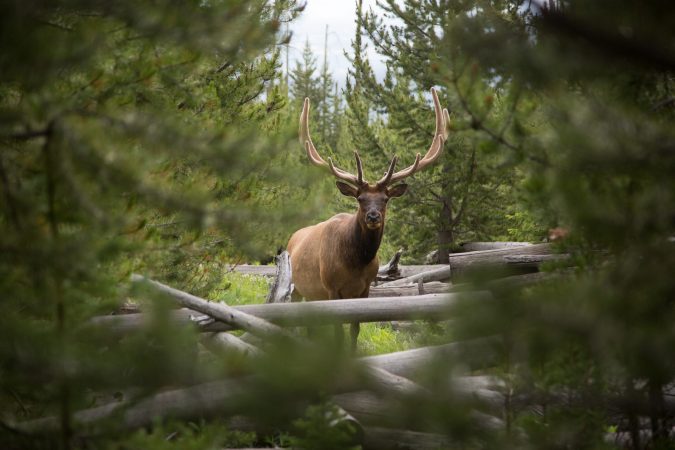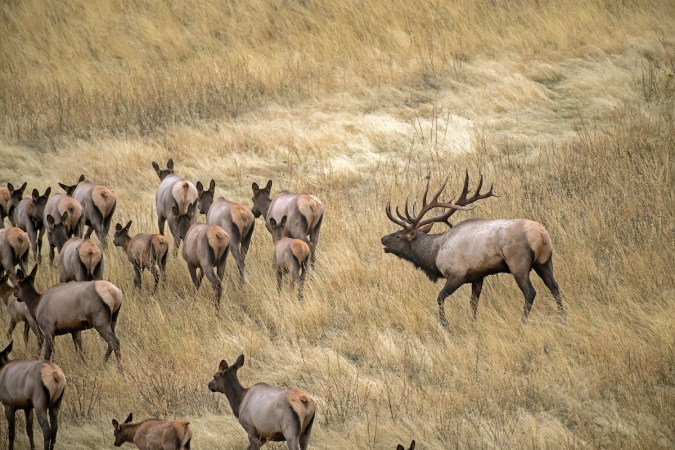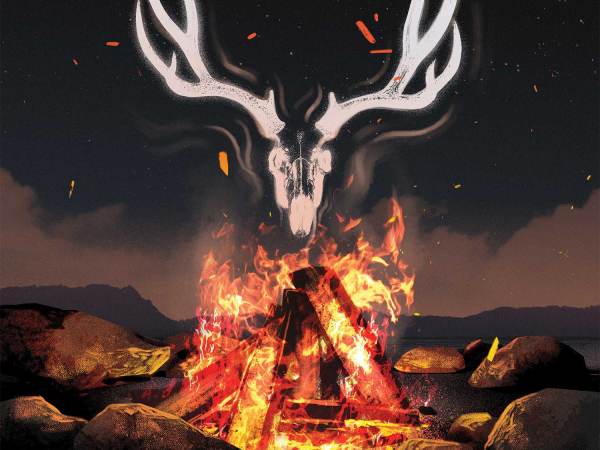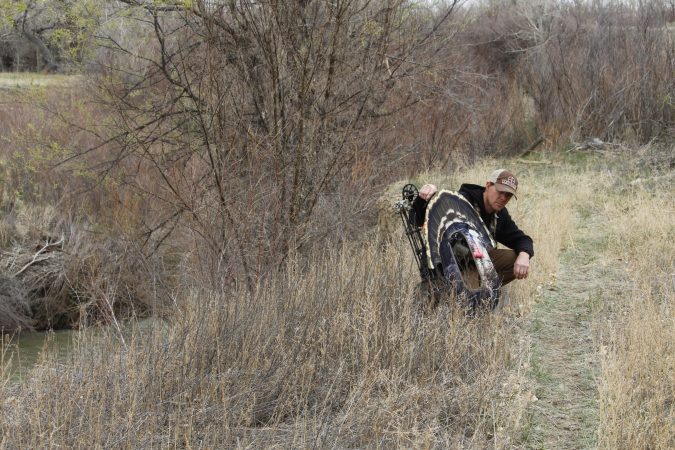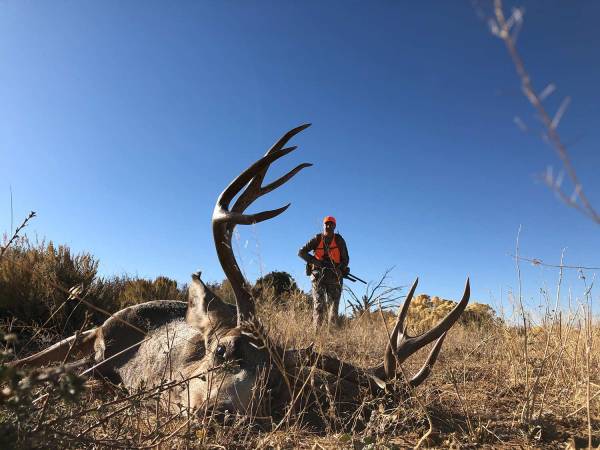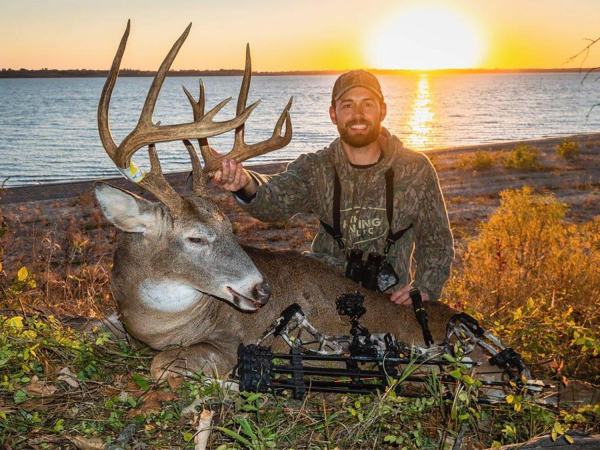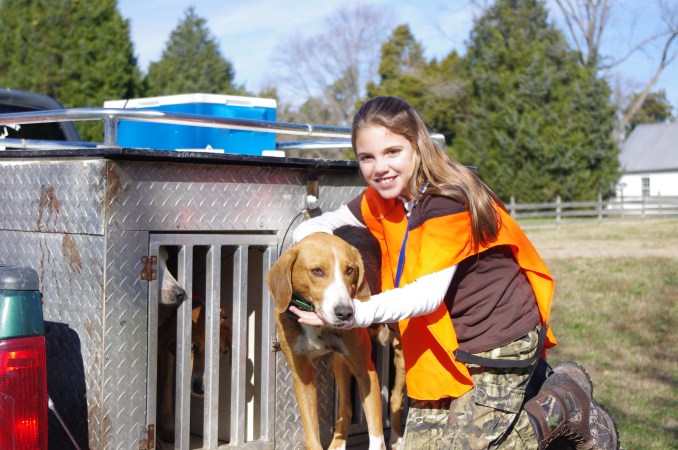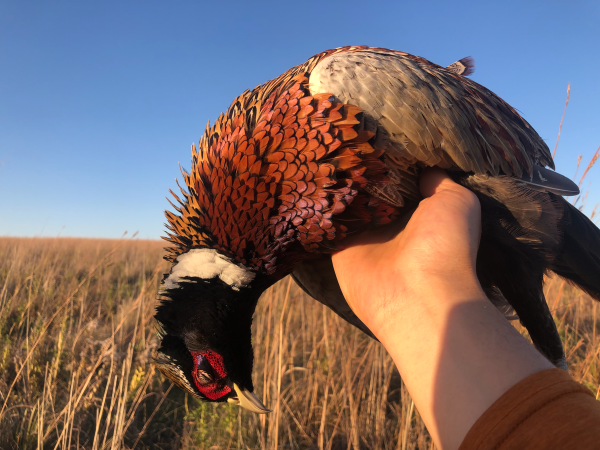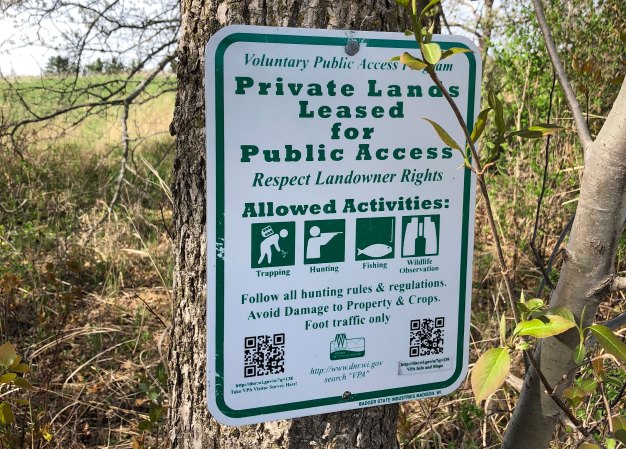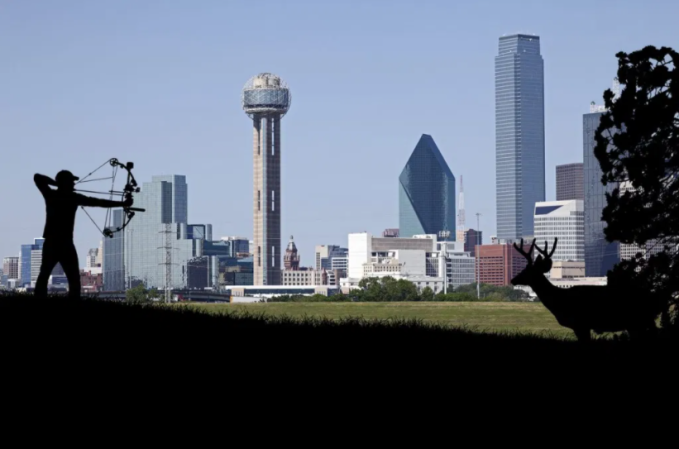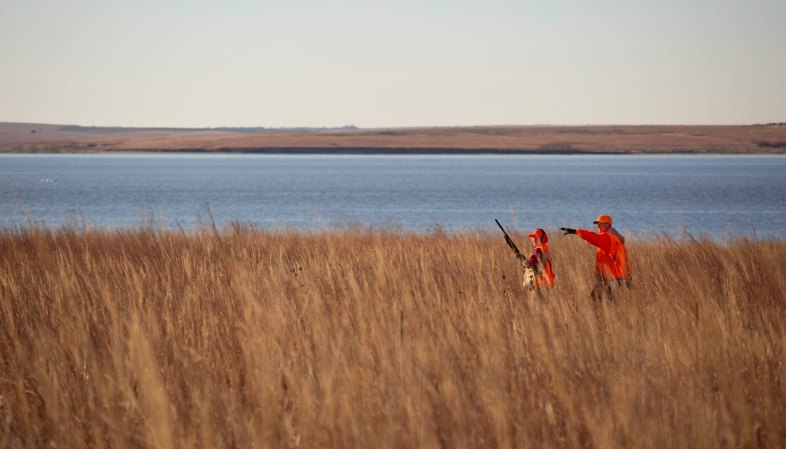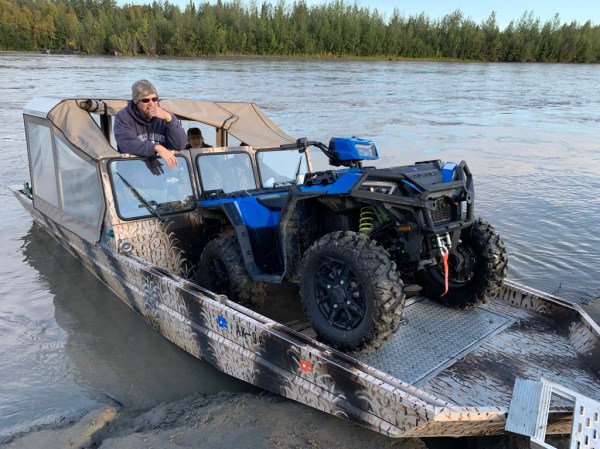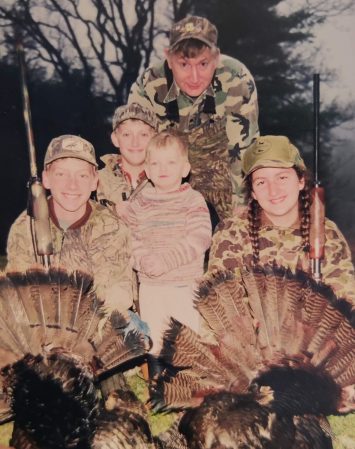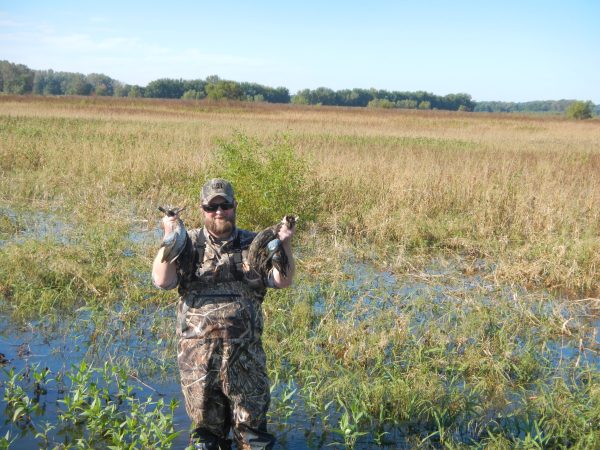For the sixth stop of The Hunting Public’s Deer Tour, Ted Zangerle and the rest of the THP crew were back home in Iowa, preparing for archery season. Zangerle had spent the majority of the summer scouting public land tracts within a few hours of their newly purchased hunting cabin, so heading into opening week, he felt confident he was going to get his eyes on nice bucks they had been patterning.
Iowa holds a special place in America’s whitetail country. It’s home to giant bucks and some good public-land hunting opportunity, but there’s not as much public ground in Iowa as there is in many other Midwestern states. It takes a little extra work to be successful hunting public land here.
On this hunt, the THP crew was hoping to see good bucks, but they were also targeting does to fill the freezer. Here’s what you can learn from their Iowa public land hunts.
Scout Like Crazy

As the opening week of bow season arrived in Iowa, Zangerle was excited to see if he could make a his summer scouting pay off. He and the rest of the THP crew had spent countless hours scouting new pieces of public land that had opened up alongside older pieces of public land they had hunted plenty in prior seasons. Their goal was to put in as much work during the off season to find good areas for when the season arrived.
On October 1st, Zangerle had boots on the ground in an area they had found a shooter just a few days prior. Even though the weather wasn’t ideal, Zangerle knew he had a small window to get in close to the bedding area before the buck began to feel hunting pressure.
They had located the bedding area, a big clear cut that was only a year or two old, during the summer. It still isn’t visible on a map, so Zangerle knew he had found something special. As he expected, the cut was loaded with thick cover and plenty of bedding.
Unfortunately, his push deep into the bedding cover on opening day didn’t pan out. The second day of the season arrived with 80-degree temperatures, so Zangerle and his cameraman, Greg Clements, decided to take the morning off and edit some upcoming episodes. That evening, they dove back into the bedding area, but again, didn’t have any action.
On the third day of the season, Zangerle spent the morning scouting further into that tract of public land and found a spot with unique access. Having never been to this specific spot, he slowly picked it apart, finding plenty of buck rubs and deer trails, and eventually bumping a nice buck around noon. The plan was to head back into that area for the evening hunt to observe the bottom full of canary grass and willows to see if they could pattern the buck’s movements.
“There really were two goals during that evening hunt,” says Zangerle. “The first was to get up high and watch over the canary grass to see if we could spot a buck, the second was to fill my doe tag and get some meat in the freezer.”
As they set up, a few does began to filter out of a willow patch about 200-yards away. As Zangerle was making a game plan to possibly stalk those deer, a doe came running out of the willows to his right and stopped at about 30 yards. Zangerle grabbed his bow slowly as she started walking right toward the base of the tree.
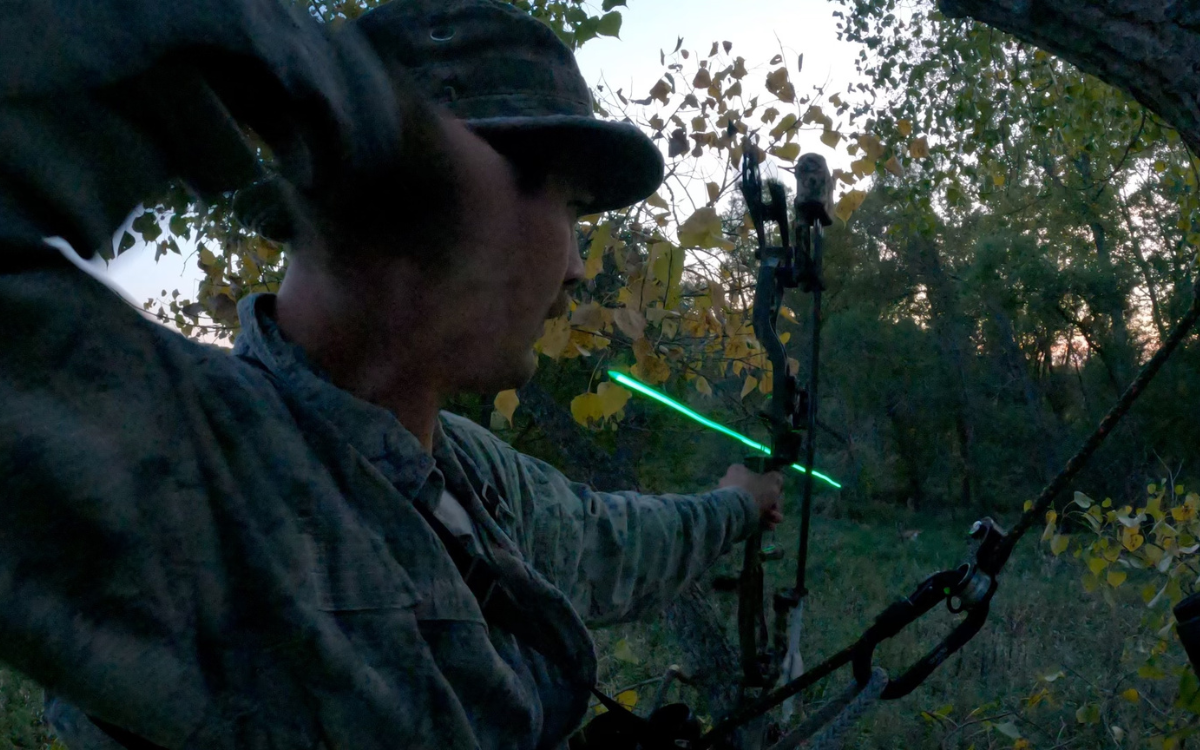
When Zangerle drew back, the doe was broadside at about 10 yards, but she was covered in grass, so he wisely waited for a better shot opportunity. Unfortunately, the doe ended up spooking and bounded away, stopping at 27-yards but looking away. Zangerle quickly came to full-draw and settled his pin. Right as he shot, she snorted and started to bound away, causing the arrow to hit her too far back. Thankfully, because of the quartering away angle, the shot was still lethal and the doe made it only about 25 yards before piling up.
As he finished up his evening sit, Zangerle didn’t end up seeing any bucks from their observation stand, but was happy with his decision to revisit this tract of public land they hadn’t hunted for a few seasons.
It’s always worth taking a chance and checking out old areas after a few seasons of not hunting them. Whether it’s from a storm, or through timbering, that area could go through major changes in undergrowth and turn into a deer haven. You’ll never know if you don’t check it out.
Don’t Force Your Shots
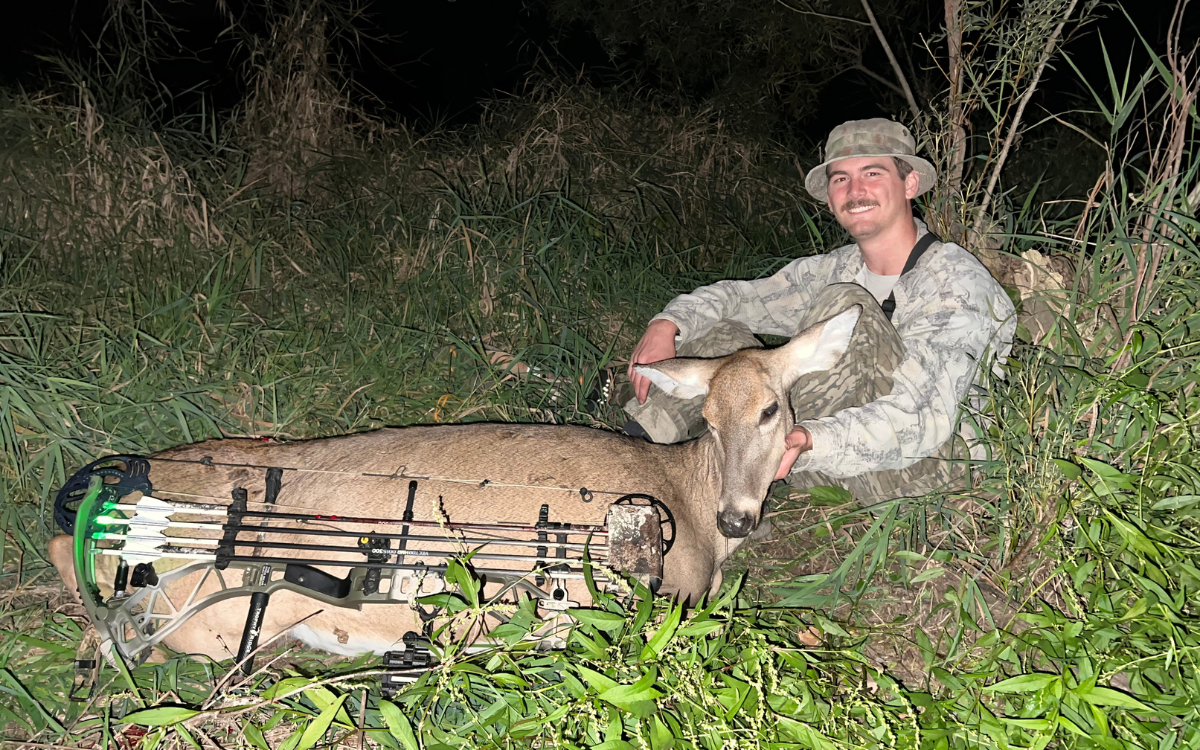
Another important lesson from this hunt: be picky with your shot selection. After hunting days and days on end without a shot opportunity, it’s all too common to get keyed up when a deer finally comes into range. That adrenaline rush makes hunting fun, but it doesn’t promote good shooting.
For Zangerle, the doe hunt served as a stark reminder of the reality of bowhunting. We’re taking a life, and we owe it to the animal to take the best shots possible to provide a quick death. He knows he was lucky that the shot ended up working out and the doe died quickly, but it very easily could have ended in a different way.
There are a few things you can do to keep yourself from experiencing that heartbreak this season. Try to avoid shooting when the deer is on high alert. If they have already spooked or are locked onto you and about to spook, the deer is likely going to react to your shot. Whether that means they “duck” your shot, or they begin to bound off like in Zangerle’s case, your arrow might not hit where you intended. To increase your chances on an alert deer, the closer the shot, the better.

“She was at 27-yards, which is a little far,” says Zangerle. “By the time the arrow got there, she had a lot of time to make a move and had started to turn and jump away, that wouldn’t have happened at 15-yards.”
When it comes down to it, your options are pretty black and white: shoot or don’t shoot. If you can take a shot at a deer that isn’t alert and ready to run, your odds will increase drastically.
Use Observation Stands During Hot Weather

The next few days were increasingly hot. This left Zangerle and the crew with plenty of time to scout and run some observation sits, rather than blowing out potential target areas with scent on days where big bucks weren’t likely to be on their feet during daylight hours.
On October 4th Zangerle and Clements went into a big bottom full of canary grass, CRP, and cedars. Zangerle had scouted the area back in July and noticed that it’s difficult to access and he had seen lots of bucks while scouting. During his scouting, he had picked a tree that he could use to get up high and observe the bottom rather than diving right in and hunting it. That’s where he and Clements decided to head that evening.
Once they got set up that evening, they saw a couple doe milling around in the bottom. As it started to get dark, they saw a nice buck stand up in the CRP about 100 yards away. He was bedded near a band of sparse cedars that ended right along a sea of canary grass.

“He started walking our way, but then turned and walked out in front of us around 80 yards out and met up with a couple of does and the group started working their way to the hardwoods,” says Zangerle.
The two had to watch him walk off to the hardwoods and couldn’t make a move because the night was so still. But Zangerle felt good about the intel he had gathered by confirming a big buck was bedding in that bottom. Had he decided to dive in and hunt the bottom, it was likely that he would have spooked that buck with how hot it was and the lack of wind, but by following the weather forecast, he was able to make a smart call and set up to observe, which will give him better chances of killing the buck in the weeks to come.
Over the next few days, Zangerle continued his plan of observation sits, simply trying to get a bead on what the big bucks were doing with the hot weather and minimal wind. With a cold front on its way, he knew the hunting was going to get a lot better in Iowa. Stay tuned for our next story with Zangerle, he ended up having one heck of an October.

